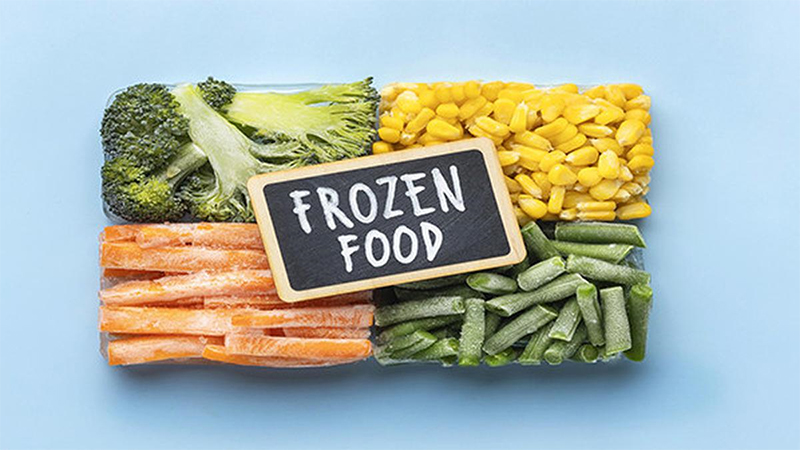FROZEN FOOD MARKET – GROWTH, TRENDS, COVID-19 IMPACT, AND FORECASTS (2022 – 2027)
The Global Frozen Food Market is Segmented by Product Category (Ready-to-eat, Ready-to-cook, Ready-to-drink, and Other Product Categories), Product Type (Frozen Fruits and Vegetables, Frozen Meat and Fish, Frozen-cooked Ready Meals, Frozen Desserts, Frozen Snacks, and Other Product Types), Freezing Technique (Individual Quick Freezing (IQF), Blast Freezing, Belt Freezing, and Other Freezing Techniques), Distribution Channels (Supermarkets/Hypermarkets, Convenience Stores, Online Channels, and Other Distribution Channels), and Geography (North America, Europe, Asia-Pacific, South America, and Middle-East and Africa). The report offers market size and forecasts for the frozen food market in value (USD million) for all the above segments.
Market Overview
The global frozen food market is projected to register a CAGR of 4.3% during the forecast period (2022-2027).
The COVID-19 outbreak had a significant impact on all the industries worldwide, but it has positively impacted the frozen food market. Since COVID-19 began, the frozen food industry has seen steady growth. For instance, according to the American Frozen Food Institute, frozen food products witnessed a 21% increase compared to 2019. The primary reason for this growth is that people have gravitated toward foods with longer shelf lives.

The market is primarily driven by rising disposable income, the introduction of longer shelf-life products, increasing impulse purchasing, and huge demand for frozen food products due to the lack of time. The market evolved from selling raw foods, such as frozen meat, fish, vegetables, and fruits, to prepared foods and frozen vegetable mixes (with meat, rice, and pasta), frozen desserts, and bakery products. Ice creams and cakes emerged as the leading product category in this market. The factors affecting the market’s growth include flavors, including sweetness, fat content, and texture.
With the strong support in terms of technological innovation and the advantages of frozen food, the products have become much more accessible and affordable for consumers across the globe. The advent of new technologies has resulted in the affordability of frozen food.

Scope of the Report
Frozen food is defined as food products that are preserved under low temperatures and used over a long period. The frozen food market is segmented by product category into ready-to-eat, ready-to-cook, ready-to-drink, and other frozen food types. By product type, the market is segmented into frozen fruits and vegetables, frozen meat and fish, frozen-cooked ready meals, frozen desserts, frozen snacks, and other product types. Based on the freezing technique, the market is segmented into individual quick freezing (IQF), blast freezing, belt freezing, and other freezing techniques. By distribution channel, the market is segmented into supermarkets/hypermarkets, convenience stores, online channels, and other distribution channels. By geography, the market is segmented into North America, Europe, Asia-Pacific, South America, and Middle-East and Africa. For each segment, the market sizing and forecasts have been done on the basis of value (in USD million).

Increasing Demand for Convenience Food
Convenience food is prepared food that requires minimum or no further preparation to be consumed. This category includes canned food, packaged food or meals, frozen food, preserved food, and instant products, among others. With technological innovations in the food industry, the range of convenience food has expanded from chilled, frozen, portion-controlled, microwave-able, shelf-stable, prepared-mixes, and others. Frozen food holds a huge share in this segment. As more women are entering the workforce and lifestyles are changing, the global demand for frozen meals and ingredients is growing. The growth of convenience retail in emerging economies is widening access to frozen food products.
This is a significant driver for the frozen category. Frozen ready meals are a big seller; alluring people with hectic lifestyles, people who are trying to lose weight, and people who live alone and do not want to prepare a full meal contributed to the growth of the market.

Increasing Demand for Convenience Food
The frozen food market is highly competitive and comprises regional and international competitors. The market is dominated by players like
Unilever, Nestle SA, General Mills, Nomad Foods Ltd, Tyson Foods Inc., and Conagra Brands Inc. The leading players in the frozen food market enjoy a dominant presence worldwide. These players focus on leveraging opportunities posed by emerging markets to expand their product portfolio so that they can cater to the requirements of various product segments, especially frozen desserts. Companies compete on different factors, including product offerings, ingredients, quality, taste, flavors, price, functionality, size, packaging, and marketing activities, in order to gain a competitive advantage in the market.
source : www.mordorintelligence.com


